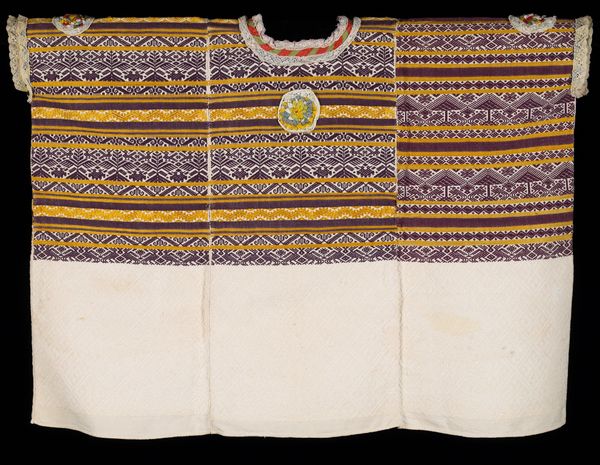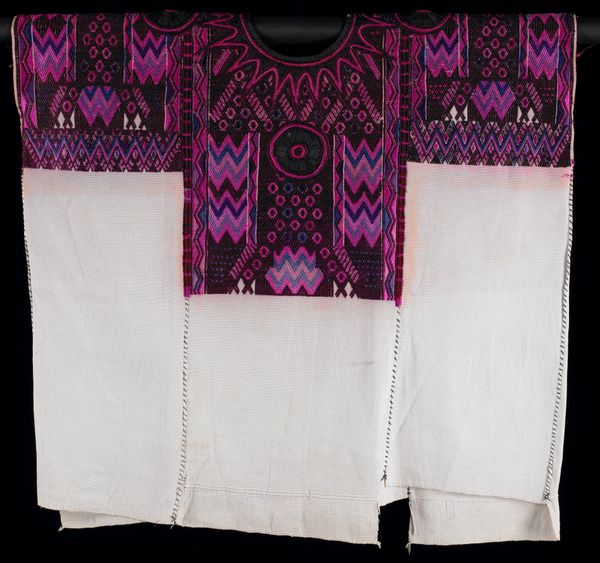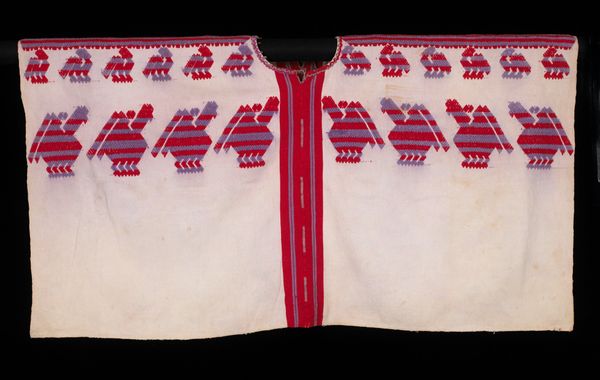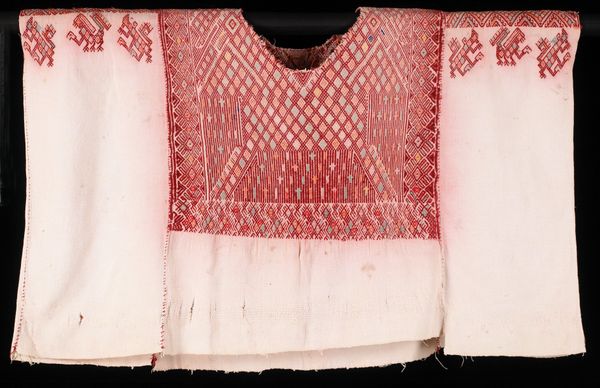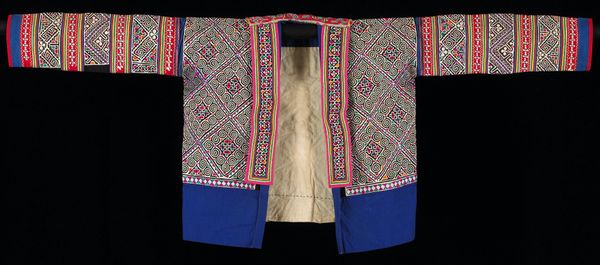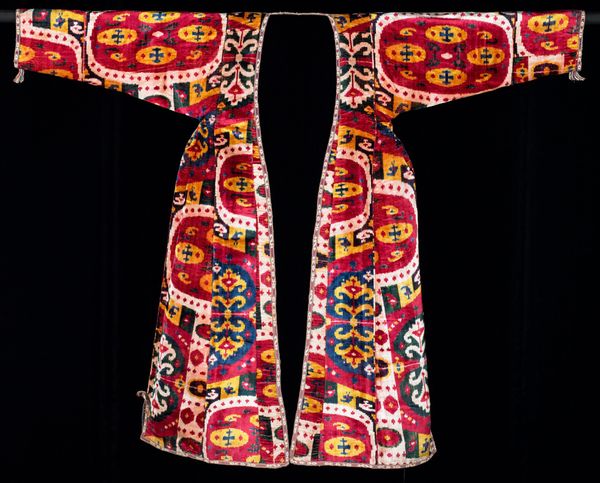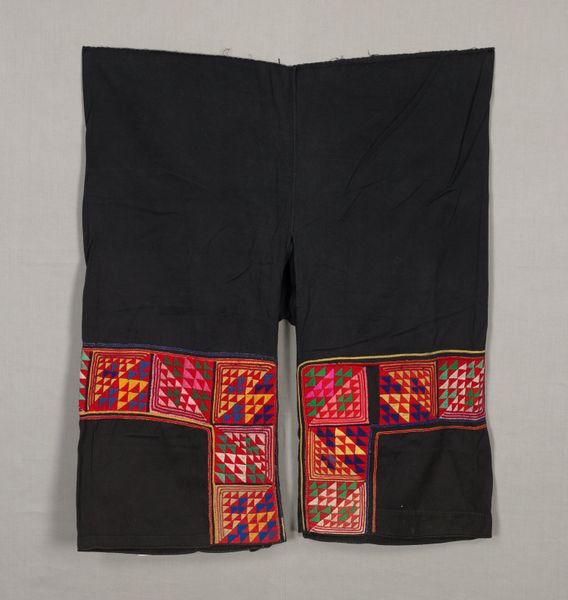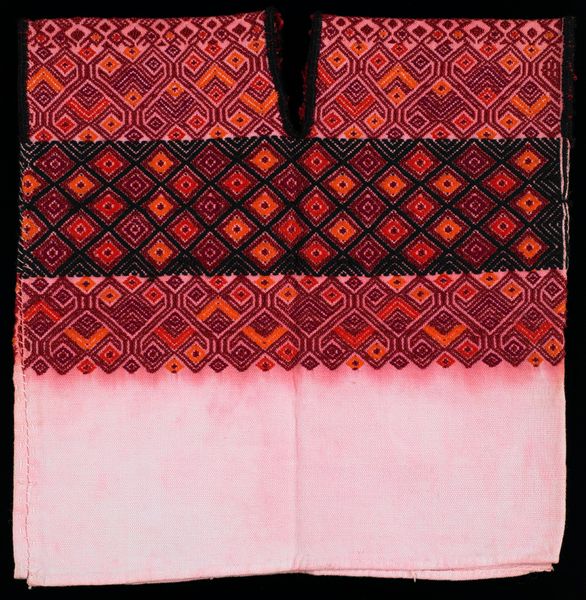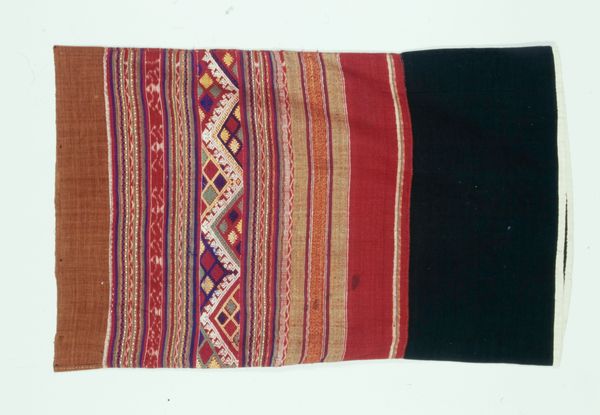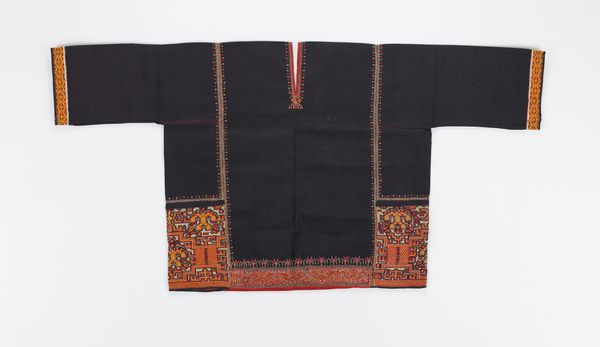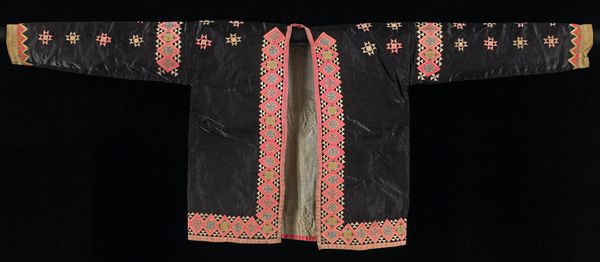
fibre-art, weaving, textile, cotton
#
editorial print
#
fibre-art
#
fashion mockup
#
weaving
#
textile
#
collage layering style
#
fashion and textile design
#
hand-embroidered
#
folk-art
#
geometric
#
fabric design
#
pattern repetition
#
cotton
#
textile design
#
decorative-art
#
imprinted textile
#
layered pattern
#
indigenous-americas
Dimensions: 31 1/2 x 34 3/4 in. (80 x 88.3 cm)
Copyright: Public Domain
Curator: Immediately, my eye goes to the vibrant tapestry at the top – a burst of color against the stark white. It almost feels like a secret garden blooming on the wearer’s shoulders. Editor: Precisely. What you're seeing is a "Huipil," a woman’s blouse crafted around 1965. The materials used are cotton and silk, telltale signs of sophisticated textile traditions from the Maya people. The Minneapolis Institute of Art is fortunate to hold it in its collection, providing a tangible link to the cultural politics embedded in textiles. Curator: It speaks to the ingenuity inherent in folk art, right? Imagine the hours, the stories woven in. You know, textiles were more than just clothing – they were literally carriers of identity, of community. Editor: Exactly! And the visual vocabulary on display – all those repeated geometric motifs, the layering of patterns – would convey social status, regional identity, and even cosmological beliefs within Maya communities. Curator: It's interesting, though. Look at how the bright bands of color seem almost contained, held above all this pure white space. There’s a tension here, maybe reflecting some societal pressure between tradition and perhaps an encroachment of Western cultural values. Am I off-base there? Editor: Not at all. Postcolonial contexts inevitably shape such folk traditions. It's fascinating to consider how such pieces negotiated the increasing visibility and marketability of Indigenous arts during the mid-20th century. Was this Huipil intended solely for local wear, or partly for sale and wider cultural consumption? Those kinds of questions are crucial. Curator: The hand-embroidered nature and that incredible amount of detailing, too... It really underscores the role of women as keepers and transmitters of cultural heritage, don’t you think? Their hands are, in essence, weaving history. Editor: Undeniably so. The meticulous production underscores the communal, almost ritualistic importance of weaving and the critical roles women played. Also, how they adopted and perhaps adapted traditional designs amid the growing availability of industrial dyes is interesting. Curator: Seeing something so vibrant, so clearly handmade amidst all this modern machine-made culture feels like a breath. A shout of, ‘Hey, we’re still here!’. Editor: And hopefully museums, by exhibiting objects like this "Huipil," actively contribute to amplifying that shout, respecting its layered histories and advocating for its continued resonance.
Comments
No comments
Be the first to comment and join the conversation on the ultimate creative platform.

